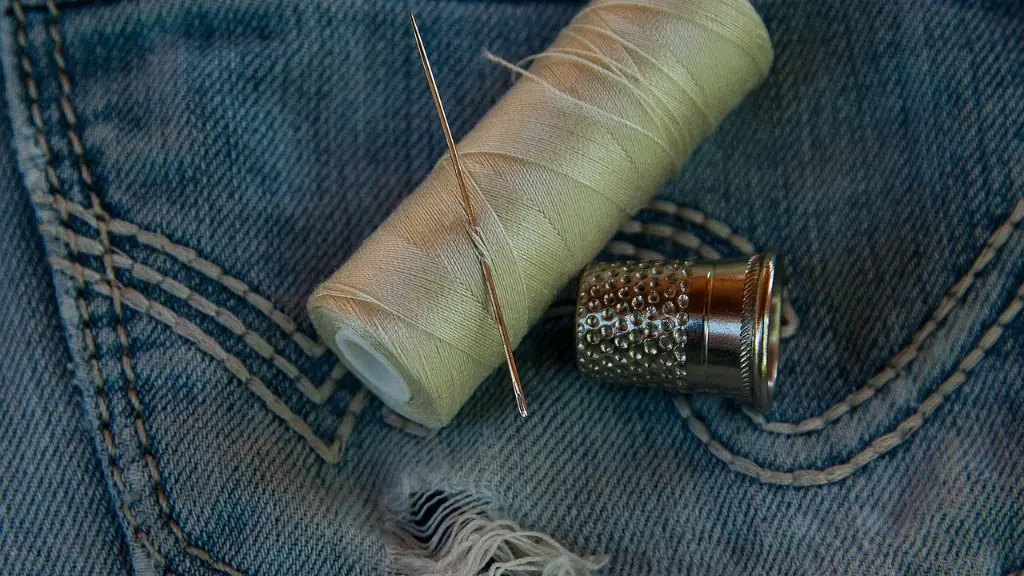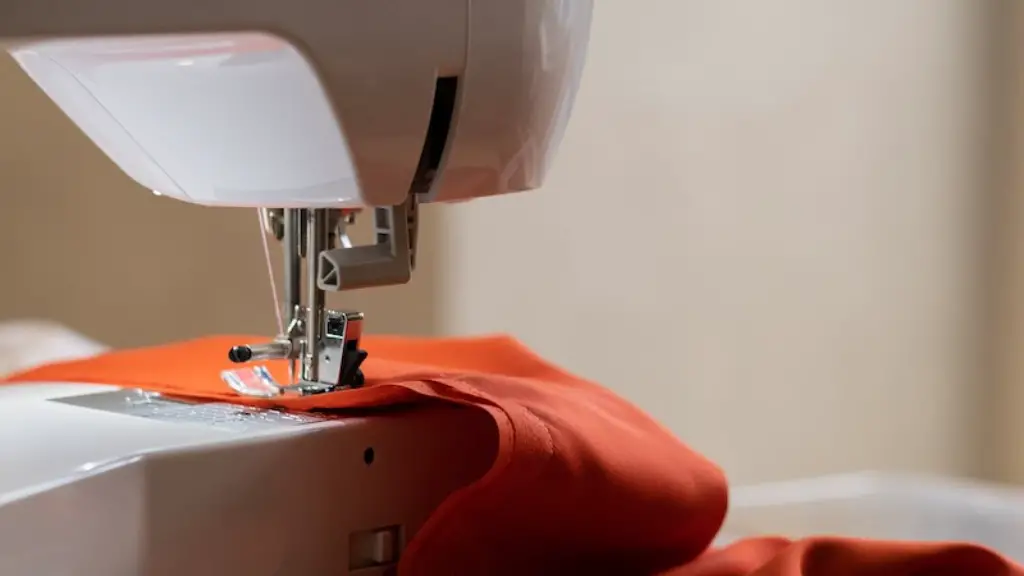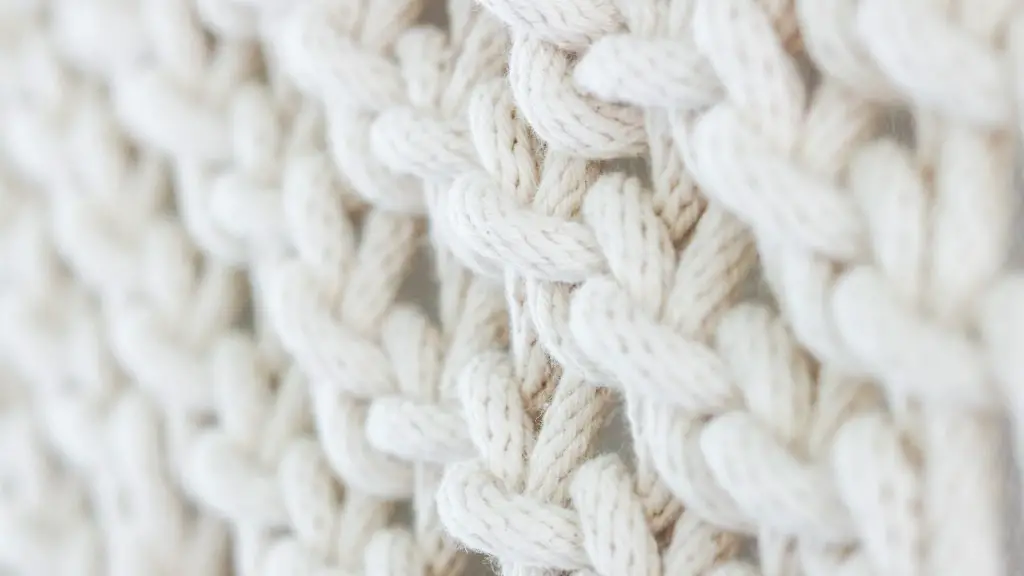How To Do A Rolled Hem On A Sewing Machine
Hemming fabric with a sewing machine is a process that has been around for centuries. Hemming is typically done to give fabric a neat and tidy look, but it also serves a more practical purpose. Hemming fabric helps to strengthen a garment and prevent the edges from fraying. What’s more, creating a rolled hem is a great way to add a unique finish to fabric.
Creating a rolled hem requires just a few basic sewing machine principles. To start, gather the fabric you want to hem. Measure the fabric, adding an extra 2-3 inches for the hem. Cut the fabric to size and make sure to press the hem. It will help the fabric look neat and aid in rolling the hem over easily.
Next, set your sewing machine to a zigzag stitch. The zigzag stitch will allow you to stretch the fabric as you work. As the zigzag stitch will form the rolled hem, it’s important to use a light hand when working with the fabric. Make sure not to pull the fabric too tightly, as this could cause it to distort.
Once you’ve set the machine, lower the feed dog. This will ensure that you always have control over the fabric as your stitch. Then, place the fabric under the needle, making sure that the folded edge is hanging off the edge of the presser foot.
As you stitch, slowly and gradually turn the fabric inwards. Doing this will create the rolled hem. When you reach the end of the hem, reverse your stitch. This will help hold the hem in place. When you’re finished, simply release the presser foot and take the finishing stitches out carefully.
Hemming Tips and Tricks
When it comes to hemming, there are a few tips and tricks to keep in mind. For one, try to start at the bottom of your hem and work upwards. This will help keep the hemline even. Also, make sure to use a walking foot when hemming. A walking foot allows fabric to slide smoothly under the foot, which is essential for good results.
If you’re hemming a lightweight fabric, consider using a blind stitch setting. This will give the hems an invisible finish that looks professionally done. Additionally, make sure to use the correct needle size for the fabric you’re working with. This will ensure that the hem looks neat and tidy.
It’s also important to use the right kind of thread. For best results, opt for thread that matches the fabric or opt for a lightweight thread. Choose a stronger thread if you’re hemming denim or heavier fabric.
Extra Care
Creating a rolled hem can take some practice, but with a little patience, anyone can do it. The key is to take your time and be gentle with the fabric. Make sure to use the correct machine settings and always lower the feed dog before beginning.
When it comes to working with fabric, extra care should always be taken. Allow extra room for mistakes, as fixing them can be time consuming. If you’re frustrated, take a break and come back to the hemming when you’re feeling fresh and energised. Hemming should be an enjoyable task, not a stressful one.
Understanding the Basics
As sophisticated as sewing machines may seem, they all do the same basic steps. When it comes to creating a rolled hem, understanding the basics of your machine is paramount. Start by reading the user manual or consult a professional seamstress if needed.
Once you familiarise yourself with the machine and hemming techniques, you can get creative. Experiment with fabrics and thread colors to create interesting rolled hems. Why not try and add a zigzag pattern along the top of the hem or use a contrast thread color?
Conclusion
Creating a rolled hem is a fun and simple way to give fabric a neat and tidy look. With a few basic machine principles, you too can create stunning rolled hems. Just remember to take your time and be gentle with the fabric. The key to successful hemming is to understand the basics and practice until it becomes second nature.
Precision
When working with fabric, precision is key. To ensure your rolled hem looks professional, make sure to use the correct machine settings. Measure the hems carefully and take your time while stitching. Use the zigzag stitch to get an even hem that looks smooth and neat.
Having the right supplies is also important. Stock up on the right needles, thread, and foot pedal. Play around with different types of fabric and thread colors to create unique effects. The more you practice, the closer you’ll get to creating perfect rolled hems.
Cutting and Grading
Creating a rolled hem requires more than just stitching. Before you start hemming, you need to accurately cut and grade the fabric. Cut the fabric to size, then grade the hem by pressing it with an iron. This will help ensure the folded edge lies flat and prevent the fabric from fraying.
Pressing the fabric isn’t just for neatness – it can also create a softer, more delicate hem. Use a light pressure when pressing the fabric to ensure that it doesn’t wrinkle. In addition, use a tissue paper pattern to help you keep the lines sharp and visible.
Customising Your Hem
Creating a rolled hem isn’t just about functionality – it’s also about aesthetics. You can customise your hems to suit any style, from classic and contemporary to edgy and modern. Play with different fabrics and thread colors to create unique hems with a personal touch.
You can also experiment with special machine feet. Hemming feet are specially designed feet that make it easier to guide fabric while hemming. They come with adjustable settings, allowing you to personalise the hems to your exact specifications. Or consider using bias binding, binding tape, and lace to create beautiful rolled hems.
Practice
Like any skill, creating a rolled hem takes practice. Don’t be afraid to make mistakes – often, errors can lead to results you never imagined. Have fun with it – be creative, experiment with different fabrics and thread colors, and practice until you get the hang of it.
When it comes to hemming fabric, it’s worth taking the time to understand the basics. With a few simple steps and some practice, you can create beautiful hems in no time. So, get ready to take your fabric to the next level and learn the art of rolled hemming.





